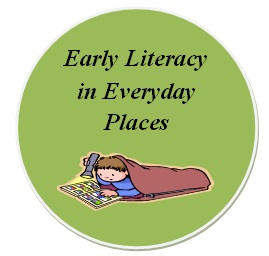 Getting dressed in the morning is a great way to incorporate early learning activities into your daily routine. Talking about the act and routine of getting dressed sets a vital foundation for your child. Its more than just the act of putting on or taking off clothes.
Getting dressed in the morning is a great way to incorporate early learning activities into your daily routine. Talking about the act and routine of getting dressed sets a vital foundation for your child. Its more than just the act of putting on or taking off clothes.
Getting dressed will help your child develop their:
- Fine Motor Skills by using zippers and buttons
- Gross Motor Skills by balancing on one leg to put on a pair of pants
- Cognitive skills by using their memory and sequencing skills to remember that socks go on before shoes. Shirts go on before jackets etc.
- Vocabulary by talking about accessories like purses, wallets, scarves and shoes in addition to articles of clothing
- An awareness of time and space. Talk about the need for different clothes for different types of weather. Shorts for the summer, rain jackets for the winter.
What Can You Do at Home?
Picking out Clothes
Explain to your child that we wear different clothes for different events. Talk about what your child can expect to happen in the upcoming day. Are they going to the park, to school, to a party? Why do we wear jeans to the park and pajamas for bedtime? These connections are important as they will grow and be able to adapt these skills to other elements in their life.
The Clothes
Talk about each article of clothing. Let them watch you pick out your clothes for the day. Explain why you are picking a certain shirt or pair of pants. Point out the front and back, the top and bottom. Show them the tag on the inside with the cleaning instructions. For extra points, you can sound out the starting letter for each word. Pants = puh. Breaking down the words in an oral context will help your children recgnize and sound out these words when they are ready to begin reading.
Getting Dressed
Talk your child through the process of getting dress. "Put your head through this large hole, put your right arm through this sleeve..." Although getting dressed may seem like second nature to us, young children are still learning these skills. Talking them through the direction not only builds vocabulary, but it also gives your child a sequence of events to follow when getting dressed. They will learn directions (right, left, front, back) in addition to contextual groupings. Shirts, sweaters and blouses are tops. Jeans and shorts are bottoms.
Make it Fun!
Sometimes getting your child dressed and out the door on time can be difficult. Make getting dressed a fun game to help speed up the time. Make up silly rhymes about articles of clothing or different body parts (nose and toes! Hat on a cat!). Sing songs and read books about getting dressed to help your child understand the why in addition to the how of this daily routine.
During your free time at home, play dress-up with different costumes or pieces of clothing. Create a fun story to act out with their child. This will help improve their storytelling skills as well as help them practice getting dressed at a casual pace.
Suggested Songs & Fingerplays
Red Dress
Sally’s wearing a red dress, red dress, red dress,
Sally’s wearing a red dress all day long.
(substitute child’s name, color, and item of clothing)
This is the Way We All Get Dressed (to the tune of Mulberry Bush)
This is the way we all get dressed,
All get dressed, all get dressed,
This is the way we all get dressed
So early in the morning.
This is the way we put on our socks…
(pants, shirts, shoes, coats, mittens, hats)


Add a comment to: Early Literacy in Everyday Places: Getting Dressed